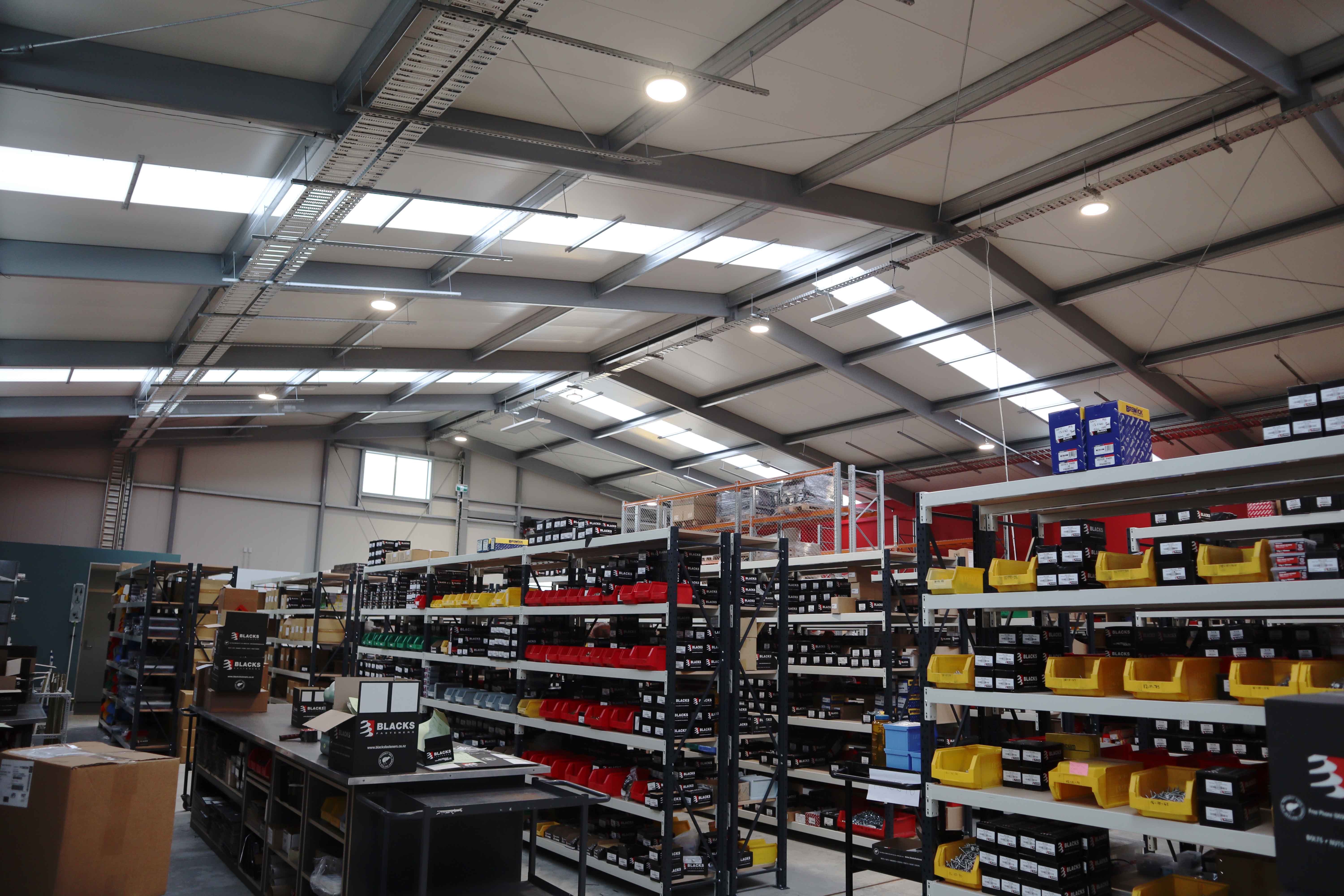Fibre VS mesh reinforcement - which is best for me?
A common question we get asked from individuals looking to build new industrial premises is:
What are the pros and cons of a fibre reinforced floor VS a traditional steel mesh reinforced floor?
OR
We have heard that fibre reinforced floors can save money - is this true?
Traditionally, a lot of the information around fibre floors has all been provided by suppliers of the fibre product. They tend to have a slight (understandable) bias towards fibre so we thought we would put together what we have learnt.
Like anything, there are pros and cons with both methods and we will outline them below so you are able to decide what is right for you.
What is fibre reinforcement?
Often people are not really sure what fibre reinforcement is and how it works, as in the past it has not been as commonly used in New Zealand as welded steel mesh.
Fibre is either a steel or synthetic strand that is added to the concrete at the batching plant. It is then mixed throughout the concrete to act as homogeneous reinforcement. Below are some images of the different types of fibres.
.png?width=800&name=XL%20%20Different%20types%20of%20fibres%20graphic%20(1).png)
On-site the concrete is laid in much the same way as a normal concrete slab - apart from the mesh.
The principle is not actually new - hundreds of years ago horsehair was added to cement and mud-brick as reinforcement. Thankfully technology and engineering have moved on since then so the horses can keep their hair and we can use modern materials.
The pros of a fibre reinforced slab
No mesh is required
The obvious one is that there is no steel mesh in the floor - which saves on labour placing and tying all the mesh.
Does that mean it will be cheaper?
In general, yes. A few years ago there was a simple rule of thumb that the material cost of the mesh was much the same as the material cost of the fibre. So this meant that the savings were really only in the labour cost of placing the mesh. However, throughout 2021 steel mesh has increased in price quite rapidly and is also in short supply so we have been hearing that the savings have become much more pronounced. Anecdotally we have heard from a couple of sources that they were saving around 20% on the cost of the slab by using fibre - plus avoiding the supply delays from mesh.
One thing to bear in mind is if you are getting a placer to install a floor at a labour only rate they may charge a little more per m² of floor to place fibre VS just concrete. This is because more care must be taken when placing it (we explain this below).
Fewer joints/saw cuts
One advantage of fibre reinforcement is the ability to design floors without saw cuts. Traditionally, in a reinforced mesh floor there is a saw cut around every 6m. This is to control the concrete cracking that happens when the concrete shrinks after drying. The disadvantage of saw cuts is they can chip out over time, and as they are the weak part of the slab, racking usually needs to be 150mm+ away from a saw cut. This can make positioning the racking and saw cuts in a warehouse quite tricky. Fibre has the advantage of reducing cracking as they are distributed throughout the concrete and can ‘intercept’ a crack as it forms.
There are other reasons as well but it all gets very technical, see what we mean here.
But won't the slab be weaker as there is no mesh to tie it all together?
Good question, we have thought the same thing so had a talk with a few engineers about it. If a slab or area of the slab is required to span over areas (for example over drains or where there is liquefaction) the engineer would likely prefer mesh and/or reinforcing bars. However, if no ‘spanning’ is required the fibres can provide a stronger slag as the reinforcement is homogeneous and through the depth of the slab.
You say that it stops cracking - but I have heard stories of large cracks appearing in fibre slabs.
We have heard those as well - and actually had first-hand experience 15-20 years ago with some large fibre slabs that cracked. Obviously, every situation has its own story, but from what we have learned is that when the cracking occurred it was either because the slab was ‘spanning’ or the fibre reinforcement was just determined from a rule of thumb - meaning it was underdesigned. There is a bit of a tradition and rule of thumb in the construction industry that the reinforcing just relates to the thickness of the floor. For example, a 100mm floor has SE62 mesh, a 125mm thick floor has SE72 mesh, and a 150mm floor has SE82 mesh. Sometimes people have applied this to fibre with a standard dosage or fibre type per m3.
While in a lot of cases this rule of thumb is fine, not all situations are equal. If you are going to have high vehicle loads, large racking, or containers unloaded on the slab it is vital that the slab is designed for these loads. Suppliers like Inforce can provide a PS1 for a slab designed to your requirements - which is cheap insurance compared to the risk of replacing a slab.
This is all sounding pretty positive towards fibre - what are the pitfalls and downsides that the proponents of fibre won't advertise?
The cons of a fibre reinforced slab
.png?width=800&name=MicrosoftTeams-image%20(1).png)
Placing concrete with fibre is not as simple as ‘ordinary’ concrete for a few reasons…
Pumping
Some fibres can be quite large and long and if they clump together it can create problems pumping it, usually this can be mitigated by adjusting the pump mix to suit the material being pumped. Of course, oftentimes you can just chute the concrete out of the back of the truck so may not need a pump.
Fibres sticking up
This is a common downside we get asked about - if there are so many fibres inside the floor how many are going to stick up? This can be a problem, particularly for the hairy strand fibre compared to the steel as the steel ones will lie down. However, if there is rain during the pour this can expose them again - so it can often be an advantage to pour the floor when the roof is on to remove the risk of this. Placers who are used to placing fibre have their own techniques and will take care to minimise this - and in many cases, customers have reported they haven't been able to find any stray fibres sticking up.
Fibres ‘balling’
This is when the fibres clump together and make a ‘ball’. It is typically a problem with the larger fibres rather than shorter ones. There are ways to mitigate or remove this through the way the fibre is mixed into the concrete at the batching plant and some types of fibres are designed to help mitigate this problem.
Wire guidance systems
Some forklift/picking automation systems require a wire to be laid into a saw cut in the floor to guide the forklift. This can be a problem if steel fibres are used in the floor as the close proximity of steel (which is magnetic) to the cable can interfere with the signal. It is important that if you are considering a wire guidance system that you discuss this with the system provider. Even if you do a mesh floor there can be a minimum distance the wire needs to be from any steel reinforcing.
Grinding the floor
If you are intending to grind or hone the concrete then fibre is not going to be a good option - as you will be exposing the fibres.
Finish
The finish on a fibre floor can be impacted by fibres catching on the float and scraping across the floor making a scratch-like mark. There can also be fibres on the top of the floor which are visible. This may not be a problem if the finish isn't critical (i.e exterior hardstands). The key is to make sure that the placer has had plenty of experience in placing fibre, and that extra care is given to the vibration to ensure that the mix is well settled. Just as you don't want to see a lot of aggregate sitting right on the surface, you shouldn't have a lot of fibres on the surface.
Overall, fibre can be a great alternative to mesh in terms of cost and time savings - as well as getting a strong slab. The key thing is to ensure that your contractor is confident and familiar with the product so you can get the finish that meets your expectations.
Still unsure whether fibre or mesh is best suited to your situation? Contact us to discuss your project and our team can provide you with tailored advice best suited to your needs.



